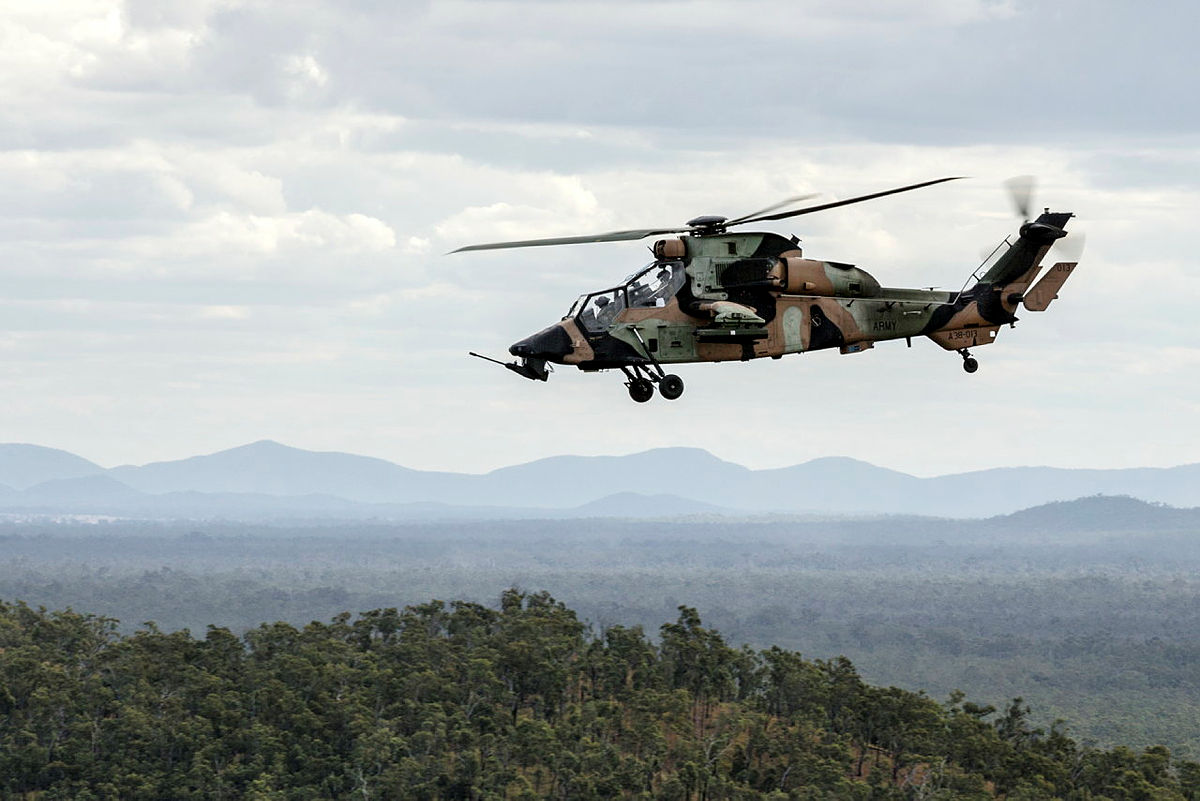
Early replacement of the Australian Army’s 22 Airbus Tiger attack helicopters looks like a severe mistake. More defence capability—more urgently needed capability—could be bought by spending the money elsewhere.
The Tigers don’t need replacing. And 2021 looks like bad timing to be recommitting to the concept of the manned attack helicopter. It would have been better to wait.
Defence Minister Linda Reynolds announced selection of the Boeing AH-64E Apache for this project on 15 January. So there’s now next to no chance that the acquisition will be stopped. But it’s still worth reviewing and remembering as a class-A example of loose spending of a plentiful defence budget—an unjustified extravagance as China becomes ever more capable of upending the East Asian order and, potentially, directly threatening Australia.
Reynolds omitted any mention of how much the planned 29 Apaches would cost—as well she might, since the figure noted in the 2020 force structure plan is a hefty $3.4–5.1 billion.
Apaches will bring a greater ability to gather battlefield information, strike behind enemy lines and support infantry in combat. ASPI’s Malcolm Davis sets out the type’s advantages here. But the project, Land 4503, is not merely adding those helicopters and their capabilities to the Australian Army; it is also subtracting what’s already in service.
The Tigers are not obsolete. They are performing well. Their running costs are high but stable and, we can reasonably hope, will fall over time as operators and suppliers find new ways of attending to problems. Thanks to years of poor fleet performance, the airframes are still fresh, so a steep late-life rise in costs is many years away. The training and support setup for the Tiger is in place. Soldiers are increasingly familiar with what they can do with these machines.
So Land 4503 is nothing like a typical procurement case, in which old equipment is unviable, increasingly unserviceable, suffering from terminally rising running costs and imminently unsafe.
Meanwhile, seeing better ways of spending $3.4–5.1 billion is not hard.
In the early 2020s, just about every Australian defence procurement decision can be judged against a gold-standard alternative: promptly buying more Lockheed Martin F-35 Lightnings, an easy move that would yield an obvious and powerful increment to national defence capacity. The force structure plan puts the cost of inducting the currently planned 72 F-35As at $17 billion. So a crude pro rata calculation using the $4.25-billion midpoint of the Land 4503 allocation tells us that Australia could have 18 additional F-35As, enough for another squadron, instead of getting 29 Apaches minus 22 Tigers.
In fact, acquisition of 18 fighters would probably not use the whole Land 4503 budget, since F-35 production costs are falling as volumes increase and since Australia has paid for the overheads of operating the type. There would be money left over to cover necessary additions to bases and training capacity (but maybe not running costs).
A discussion such as this risks descending into an author’s wish list. So let’s instead consider government-identified priorities for defence acquisitions—projects which, we can see, could be brought forward or expanded with the Land 4503 money. Such projects are those for land-based anti-ship missiles, air-launched strike capability and deployable defence systems against ballistic and high-speed missiles. All look far more likely to get the attention of the Chinese military than an upgraded attack-helicopter force.
The odds are that the army is thinking of the Apaches mainly for expeditionary operations, not for defending Australia. This underlines a considerable advantage of the AH-64E over the Tiger: ease of operation alongside the US Army, which also uses the Boeing type. It’s not a conclusive argument, however. If the Tiger isn’t considered easily deployable to, say, the Middle East, there’s an easy solution: don’t deploy it; rely on friends’ battlefield airpower instead. No ally expects Australia to turn up with everything needed for a jointly executed mission.
Finally, the timing of this acquisition is historically bad. The manned attack helicopter is not an obsolete concept but it has been heading that way. Improved ground-based defences are raising risks for these hefty machines just as drones are increasingly capable of performing battlefield aviation missions.
No one is yet giving up on the manned attack helicopter, and indeed it may turn out to have decades of viability ahead of it, working with drones that take the greatest risks. But Australia doesn’t need to make that judgement now. Because the country has a force of attack helicopters that will be serviceable for a decade or more, it can afford to wait and watch technical developments. It doesn’t immediately need to make a 30-year recommitment to the attack-helicopter concept, as it will by ordering 29 Apaches in the early 2020s.

